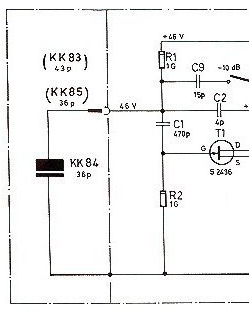Bo Deadly
Well-known member
I'm not even sure that makes sense. They just moved the cap to the other side of the capsule so any distortion in that cap is still reflected as a difference across the gate and drain of the JFET.RuudNL said:To avoid the effect of the capsule coupling capacitor.
(Many people think a coupling capacitor has an audible effect on the sound quality.)


























![Electronics Soldering Iron Kit, [Upgraded] Soldering Iron 110V 90W LCD Digital Portable Soldering Kit 180-480℃(356-896℉), Welding Tool with ON/OFF Switch, Auto-sleep, Thermostatic Design](https://m.media-amazon.com/images/I/41gRDnlyfJS._SL500_.jpg)







